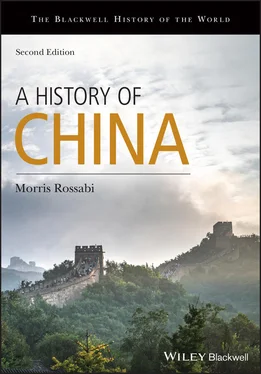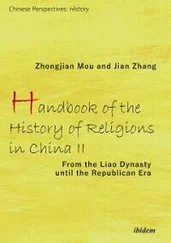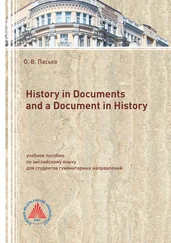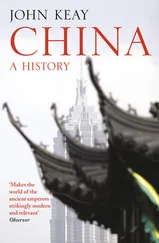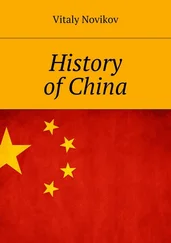A precarious balance prevailed among these states throughout the seventh and sixth centuries but it eventually collapsed late in the fifth century. Hegemons, marital alliances, and conferences between potential belligerents all averted chaos and warfare during what became known as the Spring and Autumn period. The states of the Central Plain often joined together in fear of the “barbaric” Chu in the southwest, and the state of Jin, in particular, checked the power of that state. However, in 453 BCE, internal conflicts within Jin led to its breakup into three smaller and more vulnerable states. Earlier in the century, Yue had conquered Wu and had initiated the deterioration in the Warring States period. Peace conferences and interstate alliances could no longer maintain the peace. For the next two and a half centuries, intermittent warfare plagued the central core of Chinese civilization. An authoritarian state with policies that conformed to the Legalist philosophy (to be considered later), Qin began a seemingly inexorable drive toward conquest and unification of China in the third century BCE. In 256 BCE it overthrew the last remnants of the Zhou kingdom and over the next three decades destroyed one state after another, so that in 221 BCE it was the uncontested unifier of China.
Though violence and brute force characterized the politics of the Warring States period, momentous technological and cultural developments occurred. The implications for China’s history of this volatile period cannot be over-stated. Wars themselves resulted in undeniable changes. The scale of warfare increased throughout this era so that, by the time of the Warring States, battles involved much larger numbers of troops, entailed attacks on populous towns and cities, and were fought over a much broader expanse of territory. The resulting casualties were substantial, and the number of prisoners who were executed, enslaved, or, on occasion, incorporated into the victorious army was equally sizable. With the advent of larger confrontations and battles, warfare changed from struggles between a limited number of aristocrats to encounters between masses of people. Infantry began to supplant the chariot as the most important component on the battlefield. Chariots were, in any case, ineffective in mountainous, uneven, or rutted terrain. Moreover, learning to drive a chariot and to shoot a bow and arrow from a moving chariot required considerable time, expense, and effort. Thus, hand-to-hand combat, which inflicted heavy losses on both sides in battle, tended to replace the more “gentlemanly” fighting associated with chariots. Despite the decline of the chariot, the value of the horse actually grew. There is no doubt that the use of cavalry was introduced by the nomads on China’s northern frontiers, and this offered them the tactical advantage of mobility. They could engage in hit-and-run raids, with impunity, on China’s borders, fleeing on their steeds to the steppe lands in order to elude pursuing Chinese forces. Archers who could shoot accurately while riding at full speed gave a decided advantage over armies that did not have a cavalry.
The Chinese themselves began to make use of the horse in warfare, which, together with the development of the crossbow, strengthened the military. The threats posed by the nomads, who were more adept on horseback than the Zhou, also prompted some of the northern Chinese states to build walls to deter attacks from the pastoral peoples. Nonetheless, the need for horses continued to increase, as did their uses. They could facilitate communications within China, contributing eventually to unification. Horses also hastened travel between various parts of Asia, leading to the introduction of innovations from west Asia in China and vice versa. Speedier travel would pave the way for commercial and cultural relations throughout Asia, and technological innovations and ideas would flow into China from the Indian subcontinent, central Asia, Persia, and west Asia. Finally, horseback riding influenced Chinese dress. It necessitated the use of functional outfits rather than the long and more cumbersome traditional robes. Trousers, boots, and belt buckles were developed to enable the cavalry to ride with ease. The horse thus had a pervasive influence on Zhou culture and would continue to affect China until recent times.
The scale of warfare and the resulting value of able military tacticians and strategists altered the Chinese social structure. Rulers and ministers who lacked military skills or were incapable of adjusting to the new types of military conflict lost influence. Because the much larger engagements meant more loss of life, opportunities for social mobility increased. Nobles and military commanders died, paving the way for men of lower-class origins to rise quickly up the social ladder. Even without the deaths of the old aristocrats and rulers, the new warrior groups attained higher status because the various states, desperate for any means to bolster their power, recruited them with ever more lavish inducements. Competent military men of uncertain or varying social backgrounds became dominant figures, as the aristocrats no longer monopolized power and sons of rulers did not automatically succeed their fathers. The group that profited the most from the turbulence and changes of the Warring States period was the shi , a class that might tentatively be described as part of the lower nobility. Literate and conversant with the sacrifices and ceremonies of the time, the shi were trained in the military arts, giving them the opportunity to step into power if the aristocrats faltered, died, or simply needed their expertise.
The states that emerged victorious in these struggles grew large and acquired new characteristics. Control over a much larger area required greater concentration of power in the hands of the ruler rather than the old “feudal” structure, which had resulted in a dispersal of authority. In turn, the ruler needed to recruit a corps of competent experts (rather than aristocrats who could perform the proper rituals) to help him with the more complicated governmental apparatus for his new state. These new officials, many of whom derived from the shi class, had to have training, mostly from master tutors, that would qualify them for positions guaranteeing wealth, power, and rank. Tutors would offer them practical exercises but would also use the essays and treatises written during this great period in Chinese philosophy to instruct their charges. The Warring States period thus benefited and offered mobility to this new group. Competence rather than birth often determined the staffing of positions.
TRANSFORMATIONS IN THE ECONOMY
The economic transformations derived, in part, from the more fluid social system. With the decline of the old aristocracy, new patterns of land ownership evolved. The earlier manorial system in which peasants tilled the land granted by the ruler to the nobility gradually shifted to a system of private ownership. Peasants could now own land previously in the hands of the hereditary aristocratic families who had suffered as a result of the conflicts. The peasants’ lot did not necessarily improve because the various state governments now imposed stiff taxes on them, and many of them eventually had to sell or give up their land to local landlords or usurers. Tenancy increased, and land became increasingly concentrated in estates owned by the new elite. Paradoxically, ownership of land and the relative ease with which it could be purchased and sold did not generally lead to better conditions for the peasantry. Large landholders benefited most from the transition to private ownership of land. Many peasants continued to till the land but now as tenants. A few who were deprived of their land became floating vagabonds, at times cooperating with bandits or potential rebels, which naturally exacerbated the turmoil afflicting China during this era.
Читать дальше
